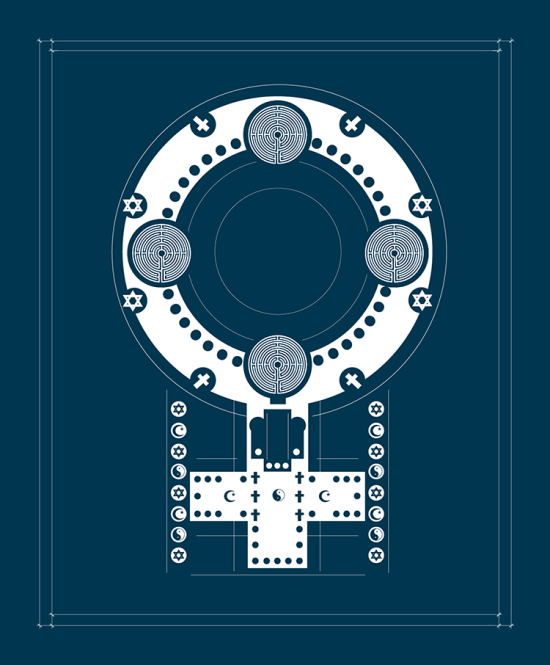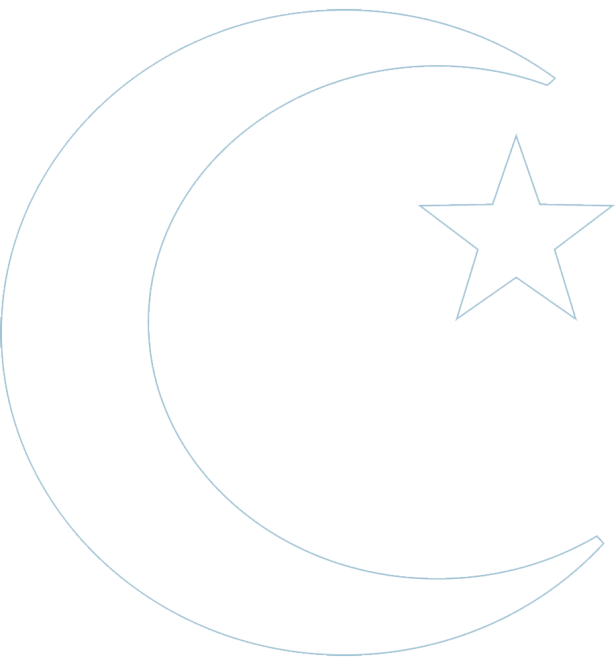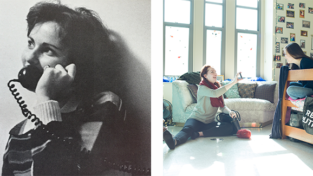Building Foundations in Faith
Guided by their spiritual beliefs, women lead the way for their families and communities
 When Rev. Felicia Thomas’s ’84 son was small, she brought him to watch choir practice at the First Baptist Church in Princeton, New Jersey, where she was the parish’s first and, to this date, only female pastor. As the choir sang the Gloria Patri—Glory Be to the Father—her son shook his head and insisted, “No, no, no! Glory be to the mother, too!” It was then that Thomas realized, “Seeing me as the leader of a religious community deeply impacted his understanding of God more than anything I ever said.”
When Rev. Felicia Thomas’s ’84 son was small, she brought him to watch choir practice at the First Baptist Church in Princeton, New Jersey, where she was the parish’s first and, to this date, only female pastor. As the choir sang the Gloria Patri—Glory Be to the Father—her son shook his head and insisted, “No, no, no! Glory be to the mother, too!” It was then that Thomas realized, “Seeing me as the leader of a religious community deeply impacted his understanding of God more than anything I ever said.”
In many traditions, women have navigated their families’ faith for generations. Historically, according to the Gallup organization, women have directed their families’ religious lives as an extension of their role as homemakers. Seven decades of polling data tell us that married women are consistently more interested in religion than their husbands are. Women are also more likely to believe in God, pray, and attend religious services. And as barriers to the ordination of women have fallen, women like Rev. Thomas and hundreds more Mount Holyoke alumnae are now faith leaders not only for their families but for entire religious communities as well.
Married to a rabbi, Ellen Dangler Weiner ’94 is involved in many aspects of synagogue and religious life. And her role in leading her family’s faith is one that she takes very seriously. She describes her husband’s job as one of “making Judaism come alive for the entire congregation” while hers is to translate the religious experience for her children. “My husband might knowthe chapter and verse of a lesson,” she says, “but we both know that I am our kids’ guide in understanding its application.”

Dangler Weiner is also a facilitator of Rosh Hodesh, an ongoing youth program for Jewish girls that starts in sixth grade and continues through high school. The director of education, a fellow women’s college graduate, approached her to lead this group because she knew of Dangler Weiner’s Mount Holyoke background, her experience as a teacher, and her strong sense of faith. Dangler Weiner, who had seen how much her own daughters were enjoying their Rosh Hodesh programs, agreed and has made it her priority to help her group of girls see feminism through a Jewish lens. Noting that many in religious study hear from teachers about the lessons taught by Moses and Joshua, Abraham and Jacob, Dangler Weiner embraces “the fabulous opportunity to help these young Jewish girls understand that there are important lessons to be learned from Sara, Rebekah, Leah, and Rachel. These matriarchs were on a journey just like they are now. . . . I try to teach them that they are linked to these women in their heritage. There is great power knowing that the female Jewish journey that they are on is not one that they travel alone.
“There are so many aspects to my role as Rebbetzin—the title used for the wife of a rabbi,” Dangler Weiner says. “At times I am a greeter, that friendly face that helps people to feel welcome when they’re new to our community. At other times, I am a confidant, sharing life’s experiences and journeys as people navigate their own ups and downs. . . . There is no guideline as to where my role begins or ends, so I simply meet people where they’re at and try to balance what they’re seeking from me with all of the other responsibilities in my life—my own full-time job as a teacher and raising our three children.”

Leading Communities
“My faith doesn’t hinder women from being leaders,” says Fayza Sohail ’05. “For me, feminism means being comfortable with my womanhood and not letting my gender be a hindrance. I don’t find it hard at all to practice my faith and strive for my rights as a woman, because my faith actually declares them to be mine.”
As a Muslim growing up in Portland, Oregon, Sohail knew many Muslim women, including her mother, who not only led their families’ faith but were community leaders as well.
Historically, Muslims would travel great distances to meet with female scholars, who were said to have unique insight into the religion. Students would wait for the opportunity to talk with and learn from them. Sohail says, “Women have been leaders from the time of the Prophet. His wife Aisha was an extremely brilliant scholar. In my religion, knowledge is valued, regardless of gender . . . and the society usually elects the person who has the most knowledge.”
Sohail entered Mount Holyoke just days before the September 11, 2001, attacks on the United States. Having come from a “long history of racial experiences,” immediately following 9/11 she had many new negative encounters, this time because of her religion. “Since I wear hijab (head covering), it is easy to identify me as Muslim,” she says. But the MHC community was supportive of her and the other Muslim students on campus. “The teach-ins and interfaith dialogue really helped make our community closer,” she says.
As an undergraduate, Sohail was active in student government and served on the board and as president of UMMA, the Muslim student association. “I think my personality has a propensity to lead,” she says. “This was enhanced by my time at Mount Holyoke. Receiving the experience of a women’s college I think makes every woman stronger. The encouragement to really strive for your goals without any thought to your gender role is liberating.”
Having always been passionate about women’s health, Sohail is finishing her first year as an intern toward a career in family medicine with a specialty in obstetrics. Now the mother of a young daughter, she already finds herself thinking about how it is her turn to set an example for her daughter “just as my mother set an example for me.”

Growing up in Panama, Micaela Cordoba ’97 was raised in a close, multi-generational family and says, “The women in my life were my superheroes. . . . They could cross oceans, create homes and clean them, create babies and feed them, and generate the hope and blessings to support us all.”
Being a person of faith means that you acknowledge that there is something greater than you that should broaden your mind. We are only human, and sometimes our culture and environment influence our demeanors more than faith. This, unfortunately, affects others’ perceptions of us.—Fayza Sohail ’05
As in many faiths, women in Buddhism had to prove themselves before being granted the right to participate in religious life. It was the Buddha himself who was one of the first religious leaders to grant women this right, though when he first came to rule, women’s duties were primarily in the home, and they were not welcomed in temples.As an undergraduate focused on pursuing a career in medicine, Cordoba recalls being like many premedical students, “driven, focused, and a hot mess!” She can trace her path to Buddhist spirituality to an advisory meeting with politics professor Penny Gill. “She asked me ‘Do you meditate, Micaela?’” says Cordoba. “The best question I’ve ever been asked.”
A lifelong feminist, Cordoba’s faith now guides her work as a metaphysician specializing in women’s health and empowerment in Luquillo, Puerto Rico. “Feminism complements my faith with every waking breath,” she says. “Over the period of the last fifteen years my practice in faith has brought me through the eye of the needle to land safely in the land of my lineage. I am fully aware that as a Buddhist I have been training my mind and my emotional psyche to break through anything that would prevent my best and highest possible self. . . . Buddhism allows me to see the lesson through all things.”

On The Way To Formal Leadership
In 1837, when devout Christian Mary Lyon founded Mount Holyoke Female Seminary, religious content was tightly woven into the fabric of campus life, from mandatory chapel and Bible study to time reserved for daily prayer; dorm rooms were even equipped with “two large lighted closets to give roommates privacy during their devotions.” One of Lyon’s goals for the school was “to cultivate the missionary spirit among its pupils.” Within fifty years of the school’s founding, her alumnae made up one-fifth of all women missionaries with the American Board of Commissioners for Foreign Mission; by 1900, 248 MHC alumnae had become missionaries.
The possibility of formal church leadership by women is a phenomenon that dates to the mid- to late-twentieth century, when mainline Protestant and Reform, Reconstructionist, and Conservative Jewish denominations began to ordain women. Women clergy were few and far between until the 1980s, and, though there were 16,000 clergywomen in the US by 1983, they were rarely in the pulpit. By 2012, the number of ordained women in the United States had grown to almost 64,000—about 16 percent of all clergy. Among those leaders are hundreds of Mount Holyoke alumnae, inspired by Mary Lyon’s charge, “Go forward, attempt great things, accomplish great things.”
Growing up in a progressive faith community, Melissa Simon ’04 says, “I never doubted that women could be rabbis, and I never questioned that I could be a rabbi.” She started her own path to the rabbinate during her time at Mount Holyoke, where she took on leadership roles at Eliot House and in the Jewish community. The experience, she says, left her “empowered to follow my dreams.” She completed a master’s degree in Jewish education in 2008 and was ordained in 2010, the same year she started as director of lifelong learning at Shir Tikvah in Minneapolis, Minnesota, a congregation serving more than 450 families.
“I have spent time exploring the places where my faith has been historically male dominated. . . . But I’ve also been inspired by the impact of women on the religion—particularly in the last forty years—as women have been ordained as rabbis,” Simon says.
Despite recent advances, just as women in other traditionally male professions have bumped against the “glass ceiling,” some women religious leaders have confronted a “stained glass ceiling.”
No one had heard of a woman senior minister in a church this size. . .—Susan Cartmell ’75
When Susan Cartmell ’75 became a senior minister of Needham (Massachusetts) Congregational Church in 1998, “no one had heard of a woman senior minister in a church this size. . . Getting the call to this position was the beginning of a journey in which I had to earn it, several times over.”Funteller Thomas Jackson FP’94 grew up in a family of strong Christian faith and sang Gospel in her church choir. In 2010 she became the first ordained female minister in the 135-year history of the Mount Zion Baptist Church in Altoona, Pennsylvania. Thomas, who is associate minister of the parish as well as choir director, has experienced the “stained glass ceiling” firsthand. “I have experienced men without seminary training or Bible College, [men] with no pastoral experience, becoming pastors of large congregations,” Jackson says. “I have prepared myself with seminary training, pastoral and mission experience at home and abroad, and a willingness to relocate but am not considered for a senior leadership position.”
But as more women are given the chance to lead bigger congregations and prove themselves to the male leaders of their denominations, Cartmell sees an evolving landscape where “many churches that start to search for a minister do not start out looking for a woman. But once they experience a good minister who happens to be a woman, it really opens the doors to new possibilities and expectations.”
A sea change already is under way in a parish where Cartmell had once served ten years as sole pastor. Before the church hired her replacement, substitute pastors led worship. “One day a man was leading the service,” she says. “A young teenage girl who had been coming to church every week for as long as we could remember asked her father who that man was up in front of the church. He told her that this was the substitute minister. She looked dumbfounded, and said, ‘I didn’t know that men could be ministers.’”
—By Kristen Levithan
Kristen Levithan is a freelance writer who lives in New England and writes about women’s history, motherhood, and books.
—Additional reporting by Jennifer Grow ’94
This article appeared in the spring 2014 issue of the Alumnae Quarterly.
April 17, 2014










Leave a Reply